BCIT's CISA1360 Final Project in Python https://youtu.be/gVCEGnfhxrs
Working demonstration is posted at: http://100.24.142.145/carpoolmashup/allmembersmapcgi.py
Obtain a Google API KEY with these API Products:
Directions API
Distance Matrix API
Geocoding API
Maps JavaScript API
Routing API
Warning
Carpool uses Google for it's Google Maps product, as well as get coordinates from street addresses. You need a Google Cloud API KEY, to try any of the options below (except for the working demonstration link above). See https://www.tictawf.com/blog/using-google-cloud-apis/ to read how to get started, on getting a API key, and assigning it the correct API to make it function for Carpool
copy to your linux (or windows, if you have git on windows, but all instruction below are for linux)
git clone https://github.com/studio-1b/CarPoolMashupPython.git
cd CarPoolMashupPython
cd Python
You need python installed, and be comfortable with command line. If you don't have python installed, run
apt install python3
Add the following to bottom of your ""~/.bashrc"" file
export GOOGLE_GEOCODE_API_KEY=<GOOGLE API_KEY>
export GOOGLE_MAP_JS_API_KEY=<GOOGLE API_KEY>
and re-login, or run the above commands in linux command line to set them in current environment
if you had to re-login, change directory to "CarPoolMashupPython/Python". To run the source code in Python run the command below, which will instruct the web browser to listen to port 8080, to access the map application.
python3 main.py 8080
Read for additional instructions to run, if you encounter problems
cat "CLI testdata script.txt"
BTW: "readme.txt" has surpisingly useless data. I was using it as project task list.
Using your internet browser (ie. chrome), visit:
http://localhost:8080
The above gives access to the map part of the application. This part allows you to see carpool destination and on map, then lists all the members that goto there and on map, then lists different pools you can group them into, then you can show the optimal path for that pool to arrive at destination. It also has a option, to show on map a pool separation, using a naive spanning tree traversal, of all members into separate pools, assuming 3 to 4 in pool.
The command line portion of the program you should see already as a menu, after running the python3 command. This CLI menu is to add/change data, shown in carpool. It has a menu, so it should be easy enough to figure out. You can create members, or carpool destinations using the CLI, as well as functions available in map.
- have the constructor of request, take the incoming tcp connection
- have a serverconfig base object, which main's config inherits from and populates the necessary fields
- the server constructor acccepts a serverconfig
- server has a .nonblockingstart() method wich creates another thread, creates the socket on it, runs a loop listening basically moving socket code from main, to server.
But I don't plan on working on this project in future.
It was fun, but there are no Web Servers that accept python as scripting language
- Install docker on Linux
- run the script "sudo ./build_docker.sh", to create a container
- To see the container, run "docker image ls"
- run the script "sudo ./run_as_docker.sh", and access http://localhost:8080 if you want to use a port 80, look for 8080 in script and change it to what you want, BUT leave 80 alone (bc it has to match EXPOSE and CMD in dockerfile)
Warning
This option still needs the Google Maps API key
This container image was built with slightly different Dockerfile, than the one in source code. It runs by default on port 80 (above shows the built image runs on 8080). The instructions below tells to pull and run the image from the public internet repository where I uploaded a already built carpool container image. This command also change the listening port to 8000 (using port forwarding). There is a reason, I used port 8000. It is b/c port 80 is often used by any webserver running on your computer and they will often conflict. Also, notice the API keys still need to be supplied as arguments.
docker run -x GOOGLE_GEOCODE_API_KEY=<GOOGLE API_KEY> -x GOOGLE_MAP_JS_API_KEY=<GOOGLE API_KEY>
-it -8000:80 public.ecr.aws/y8w3p2i4/carpoolmashup-with-testdata:latest
if you use the instructions above, direct your browser to:
http://localhost:8000
or if the container is running on a different computer, than the one the browser is running on, find the ip address for the container host, using the commands below ...for windows
ipconfig
Ethernet adapter Ethernet ... : (or Wireless LAN adapter Local Area Connection ... :) Connection-specific DNS Suffix . : Link-local IPv6 Address . . . . . : fe80::e023:889:8b1c:bc97%4 IPv4 Address. . . . . . . . . . . : 192.168.1.102
...for linux (eth0 may be different for you, but always starts w/ "e"thernet or "w"ireless)
ifconfig
ip addr
eth0: ... inet 192.168.1.102 ... ...
or
2: eth0: <BROADCAST,MULTICAST,UP,LOWER_UP> mtu 1500 qdisc mq state UP group default qlen 1000 ... inet 192.168.1.102/24 ...
and paste (the 192.168.1.102, in above is example, use the output from your computer)
http://<ipaddress>:8000
For about USD$24/mo, you can run the container above in Amazon AWS, and get a public IP address. The public IP address is temporary, though. And will be release and re-assigned when you shutdown (or restart) the container
Click the link below to read directions for running Carpool in a container, on Amazon AWS ECS Fargate Aws/README.md
Images for Web Console for CarPoolMashup
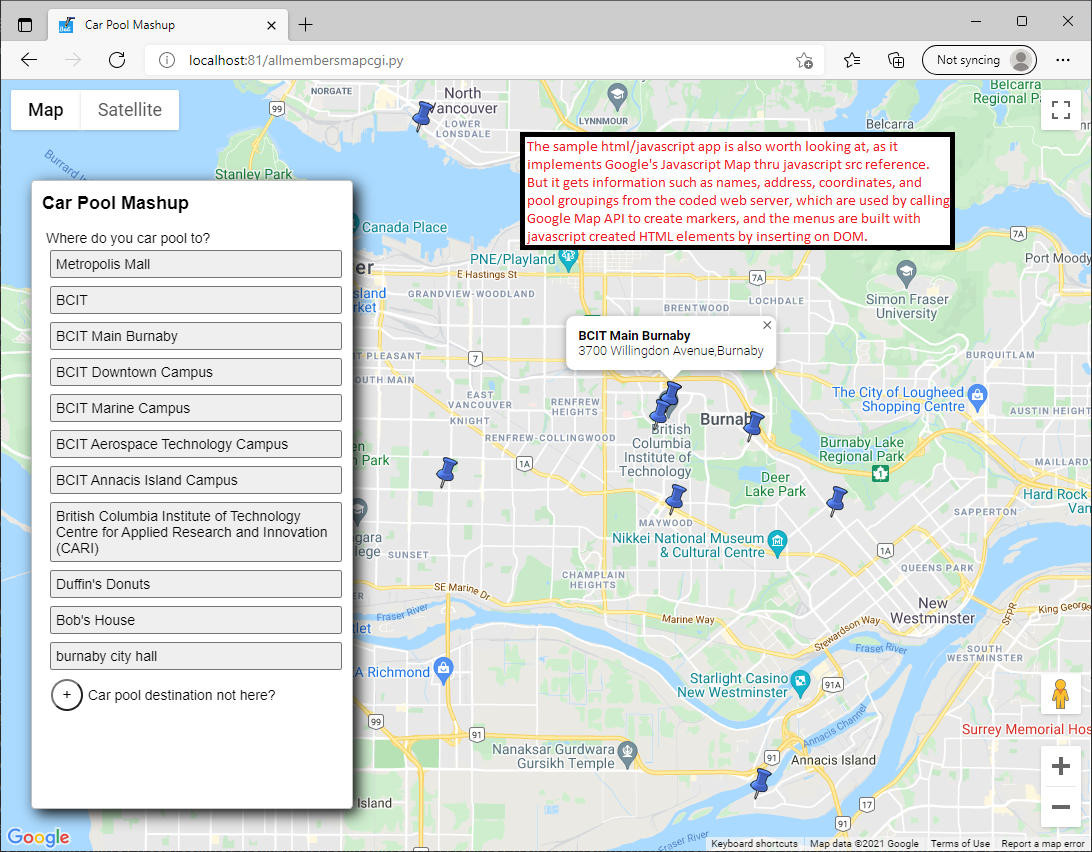
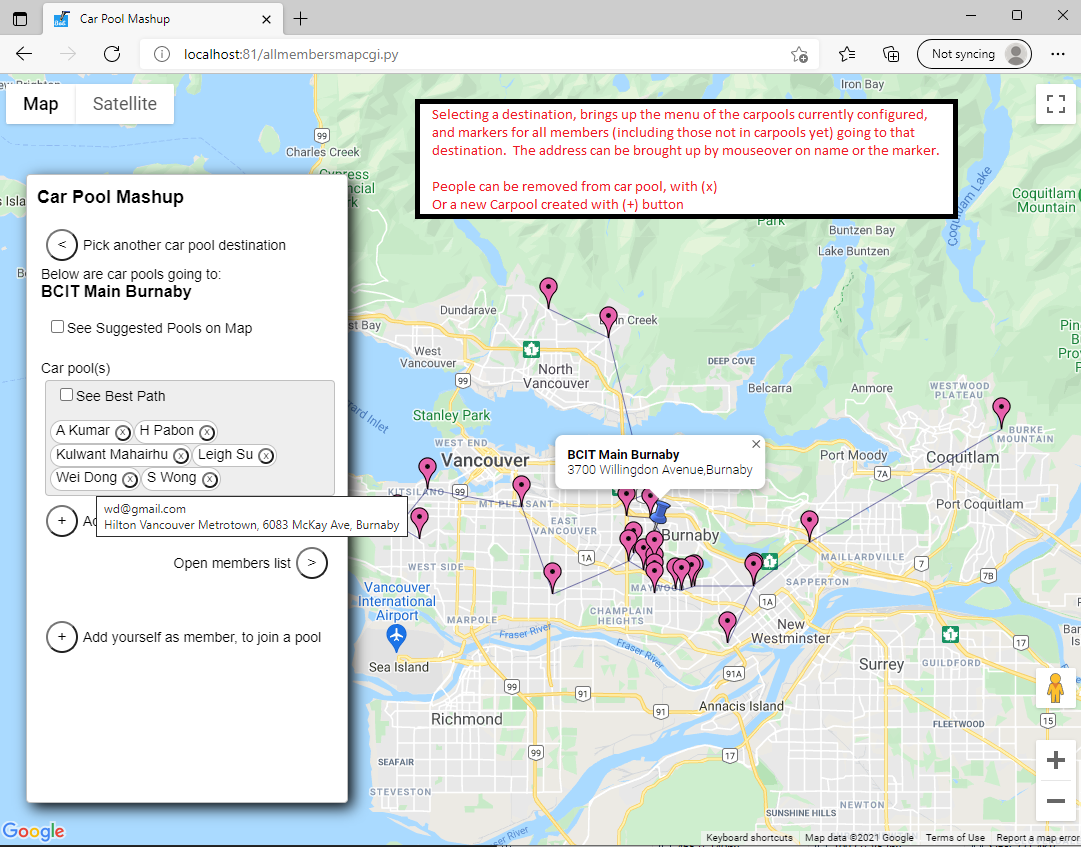
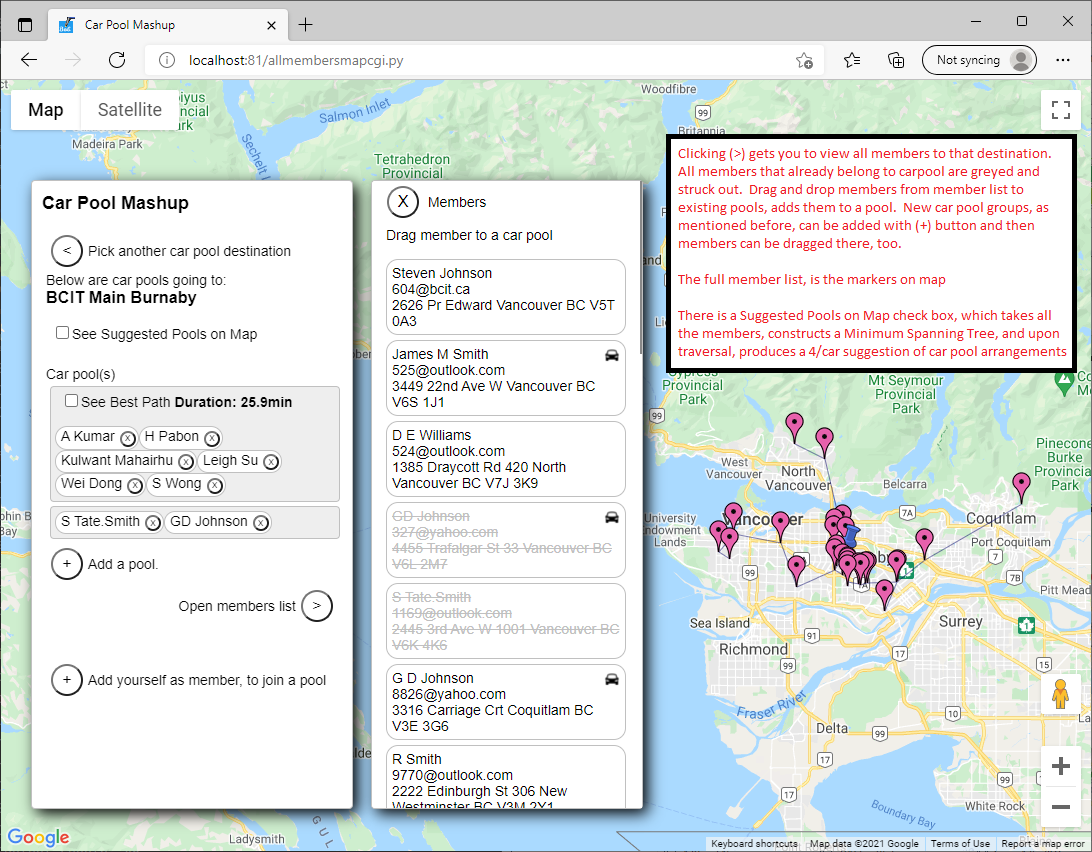
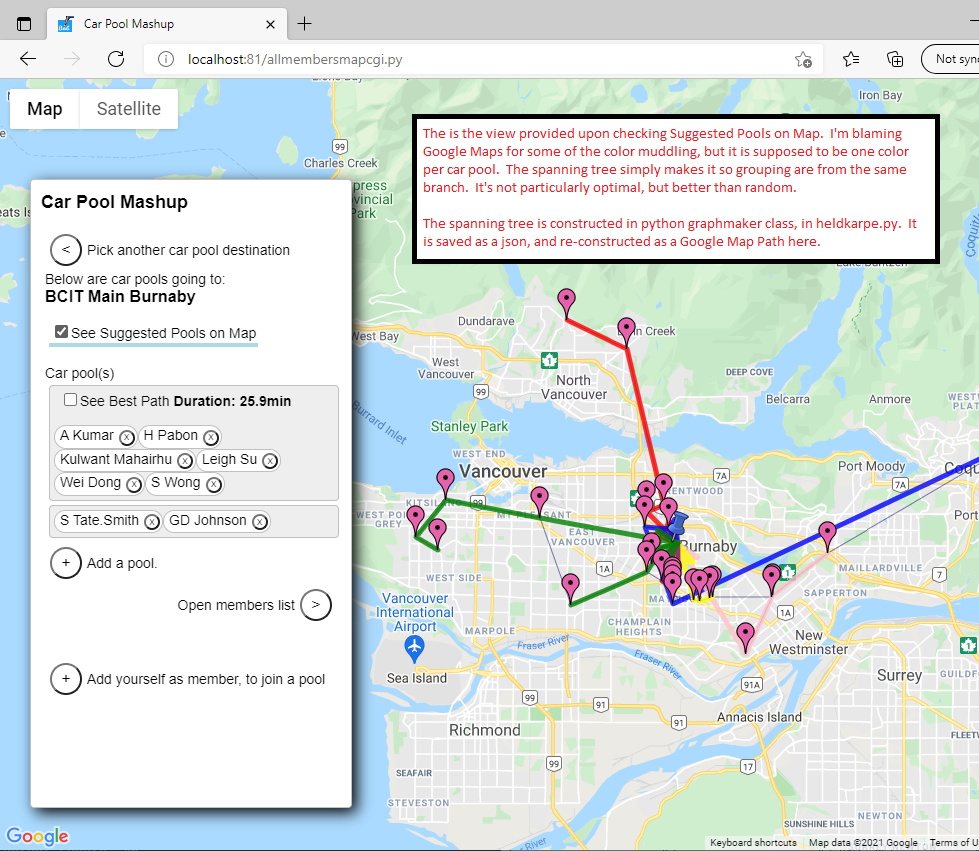
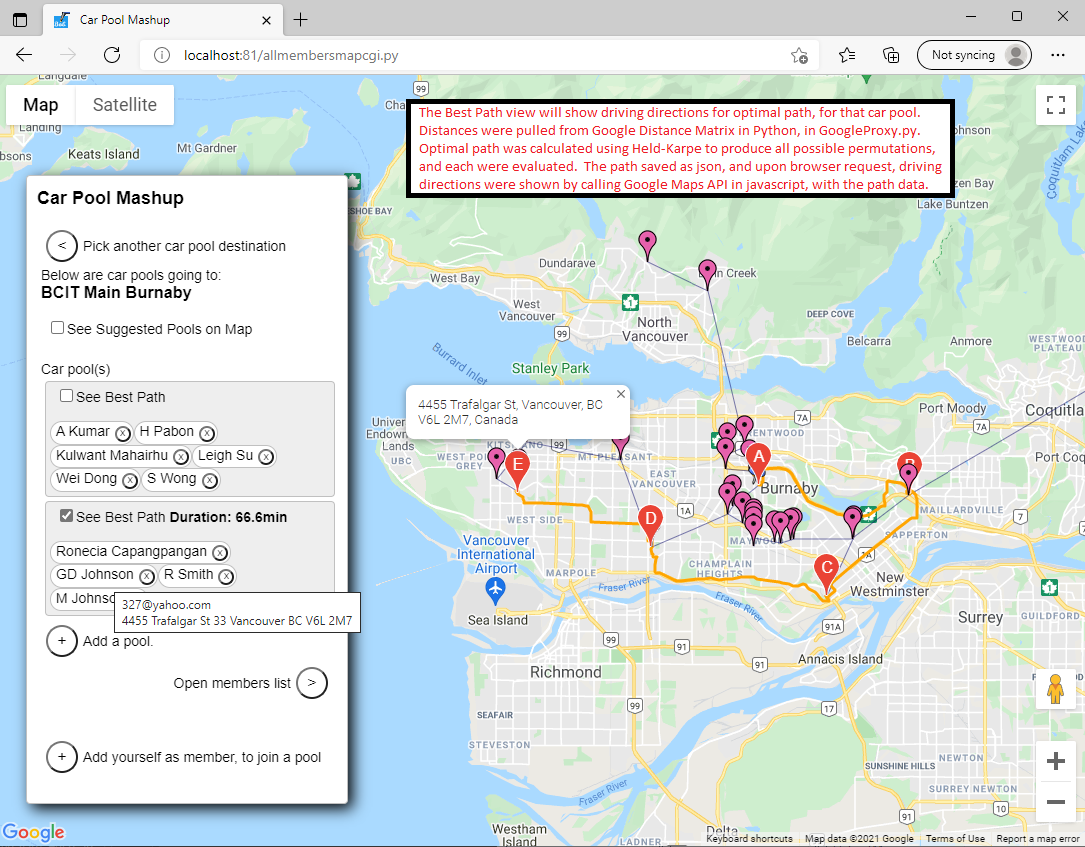
Images for CLI Console for CarPoolMashup
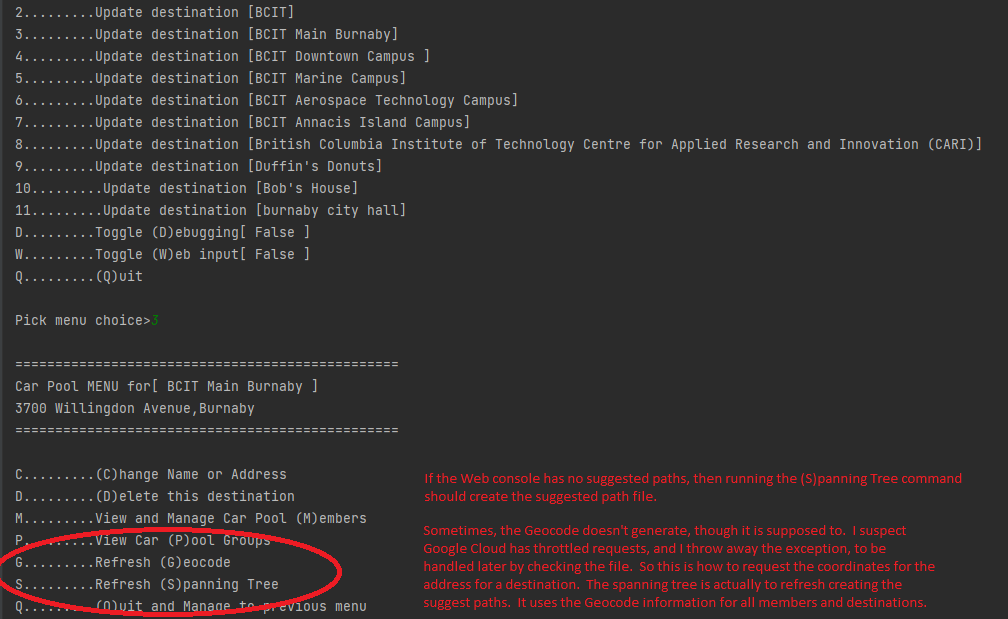
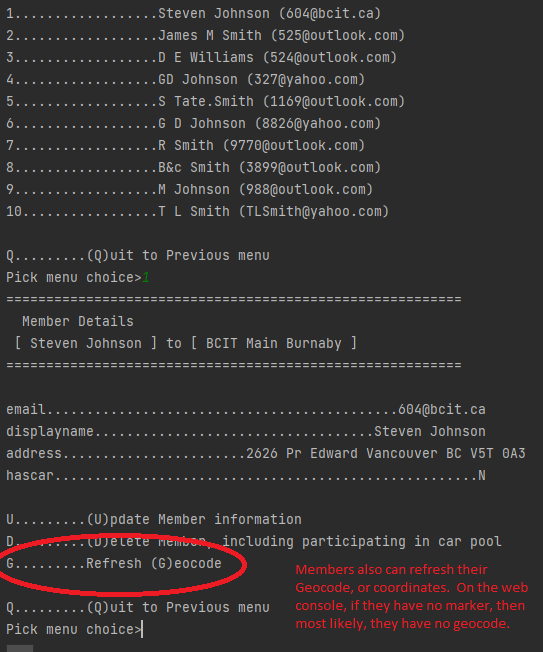
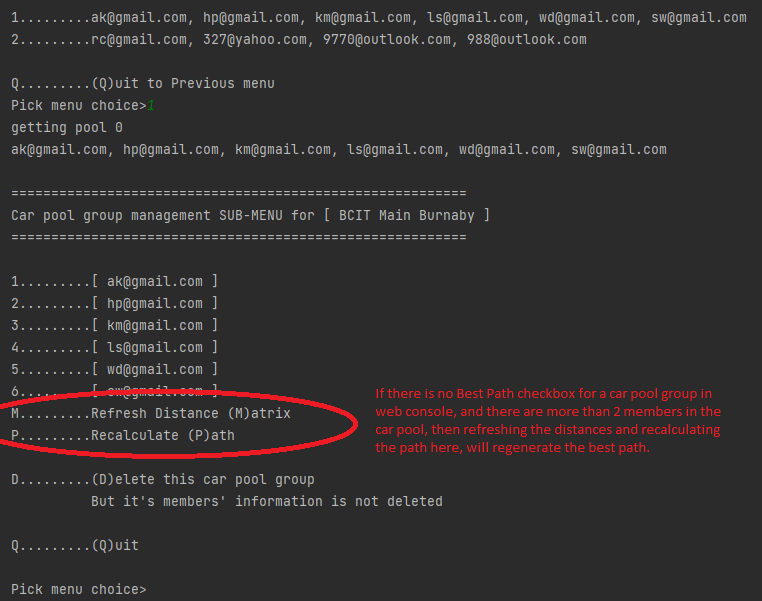
executing python3 main.py, returns unable to find "requests": run "pip3 install requests"
executing python3 main.py, return "urllib3 v2.0 only supports OpenSSL 1.1.1+, currently the 'ssl' module is compiled with LibreSSL 2.8.3": run "pip install urllib3==1.26.6"